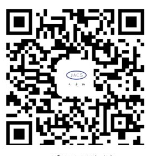Section 1 - Chemical Product ? MSDS Name:Barbital Sodium Material Safety Data Sheet
Synonym:Barbital, Sodium Salt; Malonylurea, Sodium Salt; Veronal Sodium; Medinal, Embinal, Sodium diethyl barbiturate, Barbitone Sodiu
Section 2 - COMPOSITION, INFORMATION ON INGREDIENTS| CAS# | Chemical Name | content | EINECS# |
| 144-02-5 | 2,4,6(1h,3h,5h)-pyrimidinetrione, 5,5- | ca. 100 | 205-613-9 |
Hazard Symbols: XN
Risk Phrases: 20/22
Section 3 - HAZARDS IDENTIFICATION ? EMERGENCY OVERVIEW
Harmful by inhalation and if swallowed.
Potential Health Effects
Eye:
May cause eye irritation.
Skin:
May cause skin irritation. Can be addictive.
Ingestion:
Harmful if swallowed. May cause central nervous system depression, characterized by excitement, followed by headache, dizziness, drowsiness, and nausea. Advanced stages may cause collapse, unconsciousness, coma and possible death due to respiratory failure.
Inhalation:
Inhalation of high concentrations may cause central nervous system effects characterized by nausea, headache, dizziness, unconsciousness and coma. May cause respiratory tract irritation.
Chronic:
Chronic inhalation and ingestion may cause effects similar to those of acute inhalation and ingestion. Can be addictive.
Section 4 - FIRST AID MEASURES ? Eyes: Flush eyes with plenty of water for at least 15 minutes, occasionally lifting the upper and lower eyelids. Get medical aid.
Skin:
Get medical aid. Flush skin with plenty of soap and water.
Ingestion:
Call a poison control center. If swallowed, do not induce vomiting unless directed to do so by medical personnel. Never give anything by mouth to an unconscious person. Get medical aid.
Inhalation:
If not breathing, give artificial respiration. If breathing is difficult, give oxygen. Get medical aid.
Notes to Physician:
Antidote: None reported.
Section 5 - FIRE FIGHTING MEASURES ? General Information:
As in any fire, wear a self-contained breathing apparatus in pressure-demand, MSHA/NIOSH (approved or equivalent), and full protective gear.
Extinguishing Media:
Substance is noncombustible; use agent most appropriate to extinguish surrounding fire.
Section 6 - ACCIDENTAL RELEASE MEASURES ? General Information: Use proper personal protective equipment as indicated in Section 8.
Spills/Leaks:
Clean up spills immediately, observing precautions in the Protective Equipment section. Sweep up or absorb material, then place into a suitable clean, dry, closed container for disposal. Avoid generating dusty conditions. Provide ventilation.
Section 7 - HANDLING and STORAGE ? Handling:
Wash thoroughly after handling. Wash hands before eating. Remove contaminated clothing and wash before reuse. Use with adequate ventilation. Minimize dust generation and accumulation. Avoid contact with eyes, skin, and clothing. Do not ingest or inhale.
Storage:
Store in a cool, dry, well-ventilated area away from incompatible substances. Keep containers tightly closed.
Section 8 - EXPOSURE CONTROLS, PERSONAL PROTECTION ? Engineering Controls:
Use adequate ventilation to keep airborne concentrations low.
Exposure Limits CAS# 144-02-5: Personal Protective Equipment Eyes: Wear appropriate protective eyeglasses or chemical safety goggles as described by OSHA's eye and face protection regulations in 29 CFR 1910.133 or European Standard EN166.
Skin:
Wear appropriate protective gloves to prevent skin exposure.
Clothing:
Wear appropriate protective clothing to prevent skin exposure.
Respirators:
A respiratory protection program that meets OSHA's 29 CFR 1910.134 and ANSI Z88.2 requirements or European Standard EN 149 must be followed whenever workplace conditions warrant respirator use.
Section 9 - PHYSICAL AND CHEMICAL PROPERTIES ?
Physical State: Solid
Color: white
Odor: odorless
pH: 9.4 (0.1M solution)
Vapor Pressure: Not available.
Viscosity: Not available.
Boiling Point: Not available.
Freezing/Melting Point: Not available.
Autoignition Temperature: Not applicable.
Flash Point: Not applicable.
Explosion Limits, lower: Not available.
Explosion Limits, upper: Not available.
Decomposition Temperature: Not available.
Solubility in water: Soluble in water.
Specific Gravity/Density: Not available.
Molecular Formula: C8H11N2O3Na
Molecular Weight: 206.0784
Section 10 - STABILITY AND REACTIVITY ? Chemical Stability:
Stable under normal temperatures and pressures.
Conditions to Avoid:
Incompatible materials, dust generation.
Incompatibilities with Other Materials:
Strong oxidizing agents.
Hazardous Decomposition Products:
Carbon monoxide, carbon dioxide, nitrogen oxides (NOx) and ammonia (NH3).
Hazardous Polymerization: Will not occur.
Section 11 - TOXICOLOGICAL INFORMATION ? RTECS#:
CAS# 144-02-5: CQ3850000 LD50/LC50:
CAS# 144-02-5: Oral, mouse: LD50 = 800 mg/kg; Oral, rat: LD50 = 600 mg/kg.
Carcinogenicity:
2,4,6(1h,3h,5h)-pyrimidinetrione, 5,5-diethyl-, monosodium salt - Not listed by ACGIH, IARC, or NTP.
Other:
See actual entry in RTECS for complete information.
Section 12 - ECOLOGICAL INFORMATION ? Other No information available.
Section 13 - DISPOSAL CONSIDERATIONS ? Products which are considered hazardous for supply are classified as Special Waste and the disposal of such chemicals is covered by regulations which may vary according to location. Contact a specialist disposal company or the local waste regulator for advice. Empty containers must be decontaminated before returning for recycling.
Section 14 - TRANSPORT INFORMATION ?
IATA
Not regulated as a hazardous material.
IMO
Not regulated as a hazardous material.
RID/ADR
Not regulated as a hazardous material.
Section 15 - REGULATORY INFORMATION ?
European/International Regulations
European Labeling in Accordance with EC Directives
Hazard Symbols: XN
Risk Phrases:
R 20/22 Harmful by inhalation and if swallowed.
Safety Phrases:
S 28 After contact with skin, wash immediately
with...
S 45 In case of accident or if you feel unwell, seek
medical advice immediately (show the label where
possible).
WGK (Water Danger/Protection)
CAS# 144-02-5: 2
Canada
CAS# 144-02-5 is listed on Canada's DSL List.
CAS# 144-02-5 is not listed on Canada's Ingredient Disclosure List.
US FEDERAL
TSCA
CAS# 144-02-5 is not listed on the TSCA inventory.
It is for research and development use only.
SECTION 16 - ADDITIONAL INFORMATION N/A
 507167383
507167383  2423903095
2423903095 

 893596907
893596907 

 3771156959
3771156959